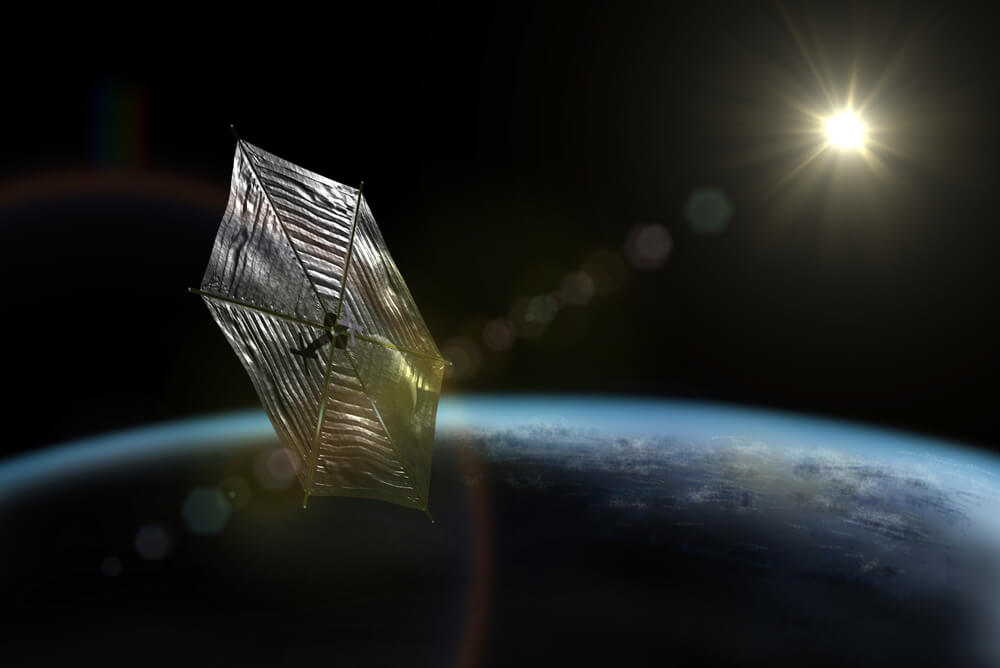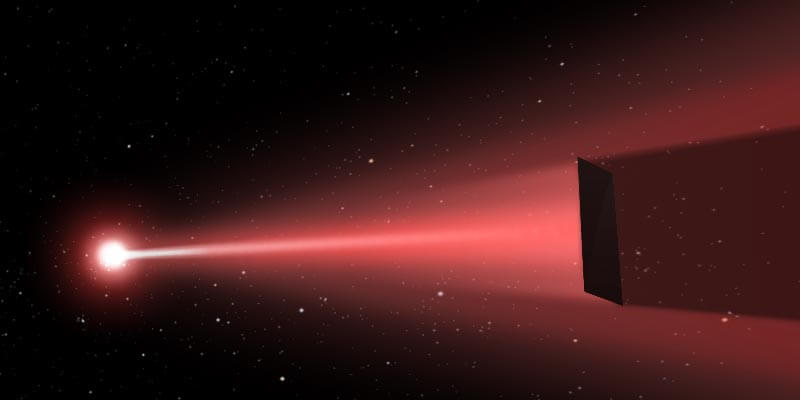A group of researchers proposes to build a spacecraft that will rely on an innovative propulsion system - in which lasers are used to heat hydrogen fuel - that could shorten the flight time to Mars to only 45 days

NASA and China plan to send manned missions to Mars in the next decade. This is a huge leap in terms of space flights, but also a big logistical and technological challenge. First, missions to Mars can only be launched every 26 months when our two planets are at their closest points in their orbits (at "contrast"). Using the existing technologies, the flight from Earth to Mars will take six to nine months.
Even using nuclear-thermal or nuclear-electric propulsion, a one-way flight to Mars will take 100 days. But a group of researchers from McGill University in Montreal assessed the potential of a laser-thermal propulsion system. According to her research, a spacecraft that relies on an innovative propulsion system - where lasers are used to heat hydrogen fuel - can shorten the flight time to Mars to only 45 days!
The research was led by Emmanuel Dupley, a graduate of McGill and now a master's student in aeronautics and space engineering at TU Delft. He was joined by Associate Professor Andrew Higgins and many researchers from the Department of Mechanical Engineering at McGill University. Their study, "Designing a Rapid Flight for Mars Missions Using Laser-Thermal Propulsion," was recently submitted to the journal Astronomy & Astronomy.

In recent years there has been a lot of interest in propulsion using directed energy and a lot of research in the field. For example, the Starlight program also called Directed Energy Propulsion for Interstellar Voyages (DEEP-IN) and the Directed Energy Interstellar Studies (DEIS) program were developed by Professor Philip Lubin and the Experimental Cosmology Group at UCSB as part of a NASA-funded study that began in 2009. The programs aim to adapt large-scale directed energy applications to interstellar missions.
Two other projects are Breakthrough Starshot and Project Dragonfly, both originating from design research conducted within the "Initiative for Interstellar Studies" (i4iS) in 2013. These ideas suggest a gigawatt laser array that would accelerate a light sail and a small spacecraft to near the speed of light (relativistic speed) to reach nearby star systems in decades instead of hundreds or thousands of years.
These ideas focus on interstellar travel, but Dupley and his colleagues explored the possibility of an interplanetary idea. Dupley explains: "The ultimate application of directed energy propulsion would be to propel a sail of light to the stars in true interstellar travel, a possibility that motivated our team that conducted this research. We were interested in how the same laser technology can be used for fast flight within the solar system, which we hope will be a springboard in the shorter term that can demonstrate the technology."
The goal of Project Starshot, an initiative sponsored by the Breakthrough Foundation, is to be humanity's first interstellar journey.
More of the topic in Hayadan:

7 תגובות
Why send missions to Mars that you can just leave the body for a second in less than a second, you're there
How do you slow down the spacecraft to land if it reaches such a speed?
And to Tomi I thought that the research was initiated by Yair Lapid. After all, in the field of foreign policy, he has no experience. So at least he will deal with the formulas of laser beams. Until yesterday, the replacement still thought that M16, this is a type of spirit wheel for painting.
The idea was written in a science fiction book from 1974, The Toothpick in God's Eye
Because it is slow. In unmanned spaceships this is not a problem but if you want to get there fast, you still have to look for another method.
It is not clear at all.
What did you want to write here?
There is the plasma engine from a long time ago that can accelerate the spacecraft non-stop inside the solar system
I wonder why it is not implemented